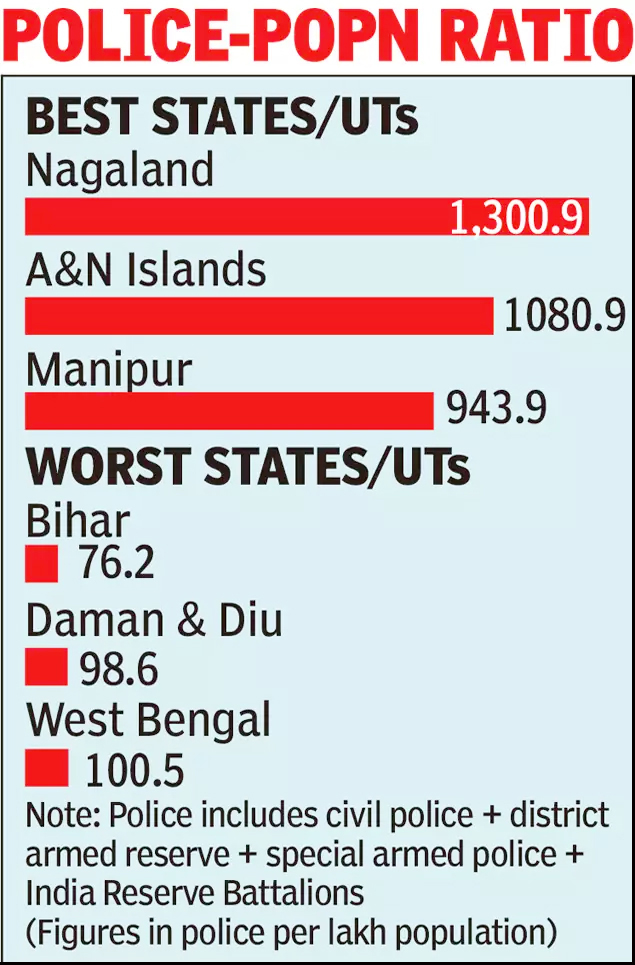Social Justice
Data on Police Organisations: BPRD
- 30 Dec 2020
- 4 min read
Why in News
Recently, the Bureau of Police Research and Development (BPRD) has released data on police organisations.
- It shows different aspects of policing in the country like woman police, police expenditure, constabulary ratio, transport facilities, communication facilities, representation of various castes and police training centres.
Key Points
- General Data:
- The government has spent Rs. 1,566.85 crore in 2019-20 for expenditure and police training.
- It highlights that Backward Classes, Dalits and Tribals constitute almost 67% of India’s population, but their representation in police forces in the country is only at 51%.
- The goal of proportionate representation has remained unfulfilled despite all state governments providing reservation to these categories.
- Vacant Posts:
- Over 5.31 lakh posts in police forces of different states and 1.27 lakh posts in Central Armed Police Forces (CAPF) are lying vacant.
- The figures include civil police, district armed police, special armed police and India Reserve Battalions.
- Over 5.31 lakh posts in police forces of different states and 1.27 lakh posts in Central Armed Police Forces (CAPF) are lying vacant.
- Scheduled Tribes:
- They form 8.6% of the population and have 12% representation in the police forces, placing them at a comparatively better position.
- Only STs have better representation in police forces in comparison to their share in population while all other backward classes fare poorly.
- Dalits:
- 14% of all positions in police forces across the country were represented by Dalits at the end of 2019.
- According to Census 2011, Dalits make up 16.6% of India’s population.
- Other Backward Classes:
- OBCs fare the worst on the representation front as, despite their 41% share in the population, they constitute only 25% of the police forces.
- Women:
- Women are highly under-represented with 10% share in the actual strength of the police in the country, even though their share in population is 48%.
- However, their situation has improved considerably over the past years as the actual strength of women in police forces has almost doubled since 2014.
- Women population per woman police ratio stands at 3,026 nationally which is very low.
- Poor representation of women in the police is posing serious challenges in dealing with crimes against women and women criminals.
- Women are highly under-represented with 10% share in the actual strength of the police in the country, even though their share in population is 48%.
- Other Ratios:
- Sanctioned Population Per Police Person (PPP) is 511.81.
- Sanctioned Police Population Ratio (PPR) is 195.39.
- It is the number of police personnel per one lakh of the population which has declined from 198 in 2018.
- The UN-mandated police-population ratio is over 220.
- Sanctioned Police Area Ratio (PAR) per 100 sq km is 79.80.
Bureau of Police Research and Development
- The Government of India established it under the Ministry of Home Affairs in 1970.
- It replaced the Police Research and Advisory Council (1966), with the primary objective of modernization of the police force.
- In 1995, the Government decided to entrust issues relating to Correctional Administration Work to the BPR&D.
- Thereby BPRD has to ensure the implementation of prison reforms as well.
- The Government of India decided to create a National Police Mission under the administrative control of BPR&D to transform the police forces in the country.
- In August 2020, it observed its 50th foundation day.
- It has been publishing the data on police organisations since 1986.







